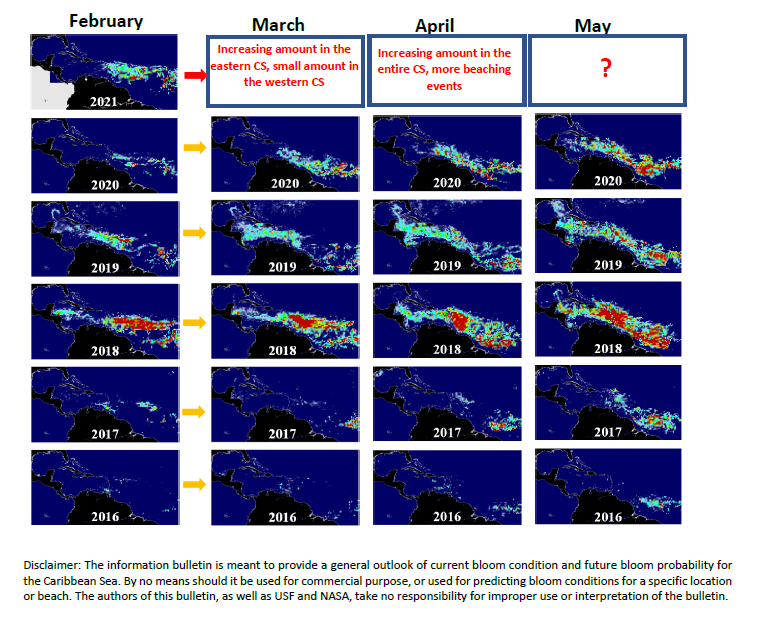The maps above show Sargassum abundance, with warm colors representing high abundance. In February 2021, the Sargassum amount remained high across the central Atlantic. Large amount of Sargassum was observed in the Central West Atlantic (CWA, i.e., the region east of the Lesser Antilles in the maps below) while the amount in Central East Atlantic (CEA) decreased. Moderate amount appeared in the eastern Caribbean Sea (CS), while the following regions are still largely free of Sargassum mats: western CS, Gulf of Mexico (GOM), and Florida Straits. In all regions combined, total amount decreased from ~5.1M tons in Jan. 2021 to ~4.6M tons in Feb. 2021, similar to February 2019 (4.3M) but much larger than all previous February months except Feb. 2018 (10.3M).
Looking ahead, the eastern CS will likely experience increased amounts of Sargassum in Mar and Apr 2021, while some of the Lesser Antilles Islands will continue experiencing beaching events on both their windward leeward beaches. This situation may continue into the summer when Sargassum may be transported to the GoM. Overall, this year appears to be similar to 2019. We will keep a close eye on how Sargassum in the CS and the tropical Atlantic may evolve in the next two months. More updates will be provided by the end of February 2021, and more information and near real-time imagery can be found under the Sargassum Watch System (SaWS, https://optics.marine.usf.edu/projects/saws.html).



